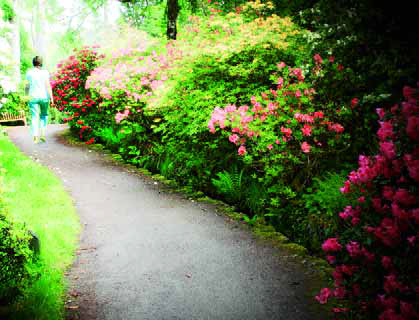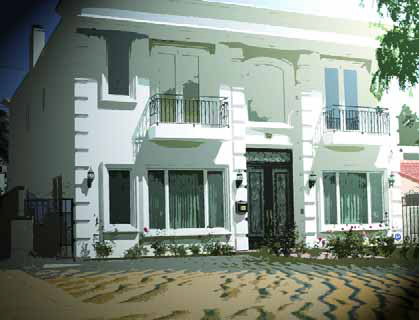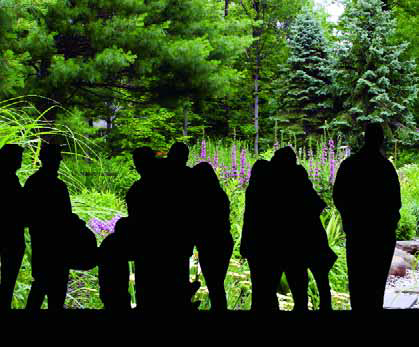Natural Companions
'When I paint,' observed Stephanie Rose at the start of her Natural Companions column in October 2006, 'I constantly play with color on canvas and experiment with various combinations to see what works well and discover what, to my eye, clashes or doesn't seem to mix harmoniously.' 'As a landscape designer, I'm aware of working through the same sort of
'Science tells us that the human eye can see about seven million colors and that our minds instinctively perceive depth and dimension. This visual capacity,' noted Stephanie Rose at the outset of her Natural Companions column in April 2006, 'enables most of us to move around without bumping into things, some of us to swing at and somehow hit a golf ball and, in the case of a beautiful garden (we can hope), all of us sense
'As fall looms before us,' noted Stephanie Rose in kicking off her Natural Companions column in the September 2000 issue of WaterShapes, 'it's timely to consider a question that should be a factor in every design we prepare: To drop or not to drop?' 'This question is a good one to ask before you start planning and has to do with how much natural debris your clients will be willing to fish out of their watershapes once you're gone. In other words, while it's always important to decide
'Surely you've heard this line before and never believed it,' declared Stephanie Rose to open her June 1999 Natural Companions column, 'but I'm here to tell you that size does matter. 'Have you ever, for example, built a pond or fountain with concrete either surrounding it or fanning out from it beneath the soil - and then had your clients say they wanted a very mature tree or shrub planted right up against the edge? There you are with
This has been a year of changes. Consider the weather, which, in my corner of the world, saw unusual, sustained periods of freezing temperatures never witnessed in my lifetime along with inconceivably low rainfall totals that make water rationing a very real possibility on southern California's horizon. Whether these climatic extremes are, as some scientists are saying, a consequence of global warming or not, the fact of the matter is that these phenomena are worrisome and their implications need to be
Recently, much has been written and discussed in our local Los Angeles media - newspapers, magazines, television - about an influx of architectural styles to our area that "just don't fit in" and are generally thought of as being a blight on our collective landscape. This isn't anything new, of course. I recall similar dustups in the 1970s and '80s when the stylistic serenity of old, established neighborhoods was being disrupted by the insertion
Recently, much has been written and discussed in our local Los Angeles media - newspapers, magazines, television - about an influx of architectural styles to our area that "just don't fit in" and are generally thought of as being a blight on our collective landscape. This isn't anything new, of course. I recall similar dustups in the 1970s and '80s when the stylistic serenity of old, established neighborhoods was being disrupted by the insertion
With spring upon us, calendars of local events are filling up with garden tours of all shapes and sizes. From large estate tours and special events at botanical gardens to tours of wonderful neighborhoods staged by local garden clubs, there's much to be seen while wandering through the grounds and yards and viewing the work of other designers and architects. I've always enjoyed these tours and learn something from each and every one, whether it's about a new plant or plant combination or an installation technique shared by a generous designer or installer who's on hand for that purpose. On a completely business note, I also have to say that some of my best-ever


















Making Changes